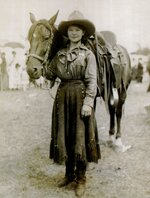Caduceus
Heritage
.
The endless layers of clothing a woman had to put on in the early 1900s each morning to get dressed.
(This style ended sometime during world war 1, and was replaced by the rebellious 1st wave feminism 1920s flapper look).
.
The endless layers of clothing a woman had to put on in the early 1900s each morning to get dressed.
(This style ended sometime during world war 1, and was replaced by the rebellious 1st wave feminism 1920s flapper look).
.
Last edited:




